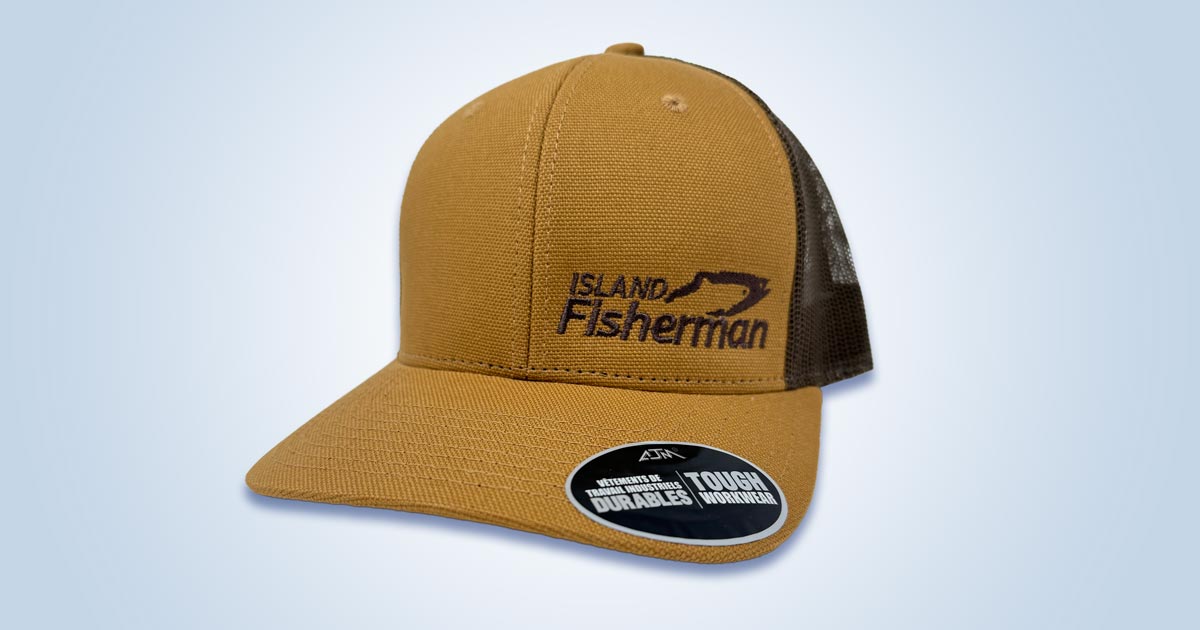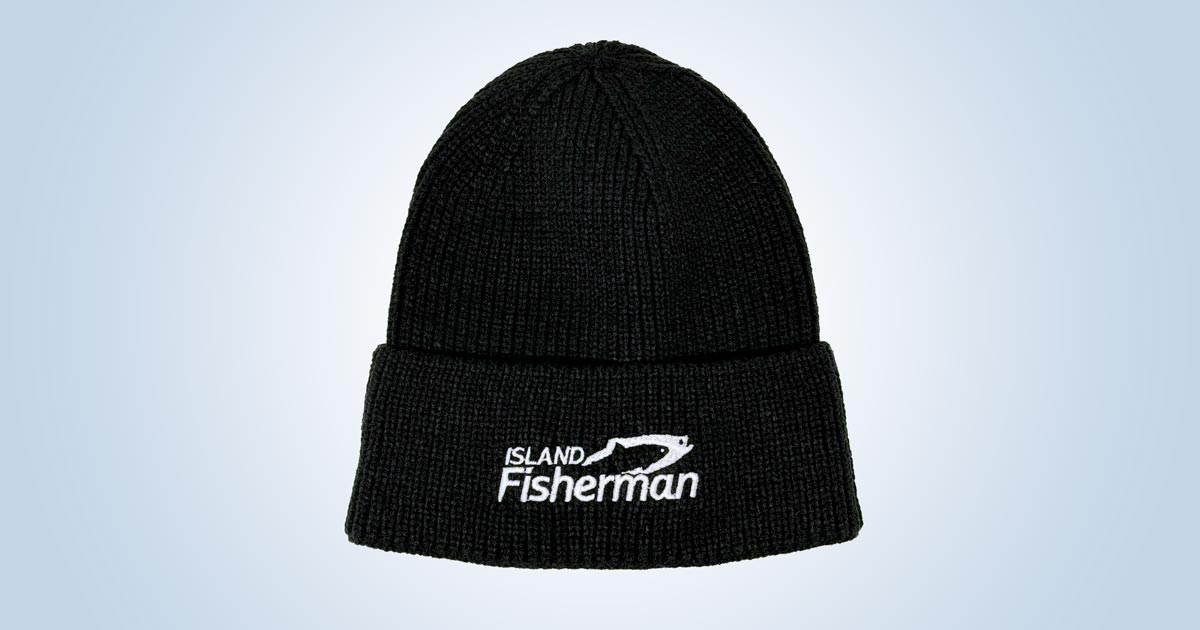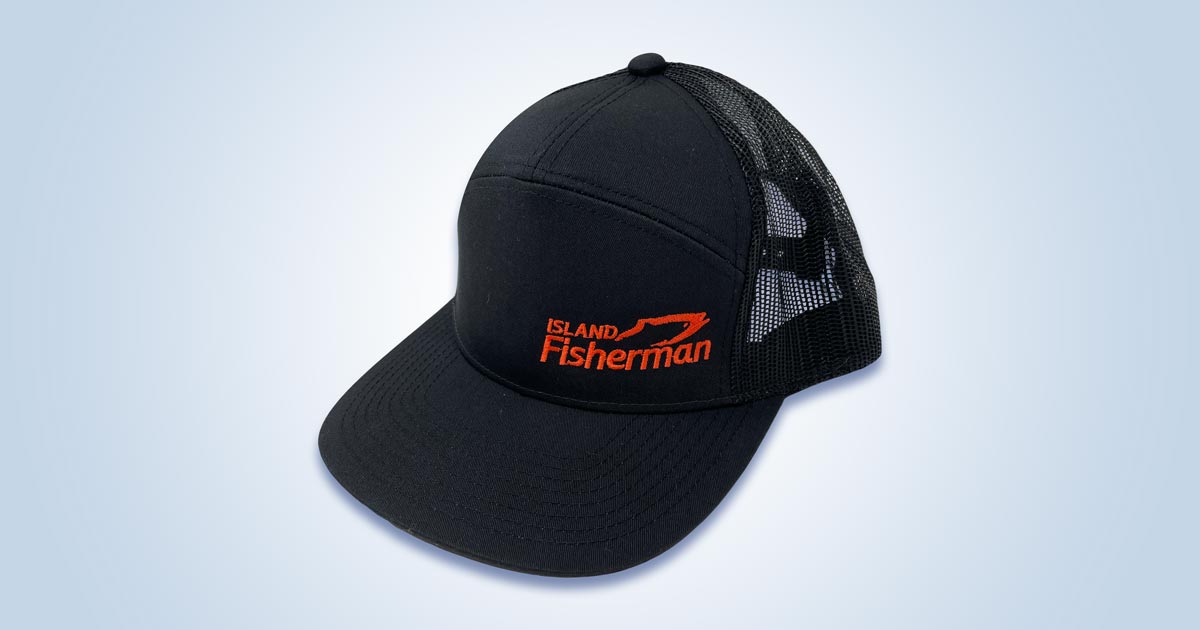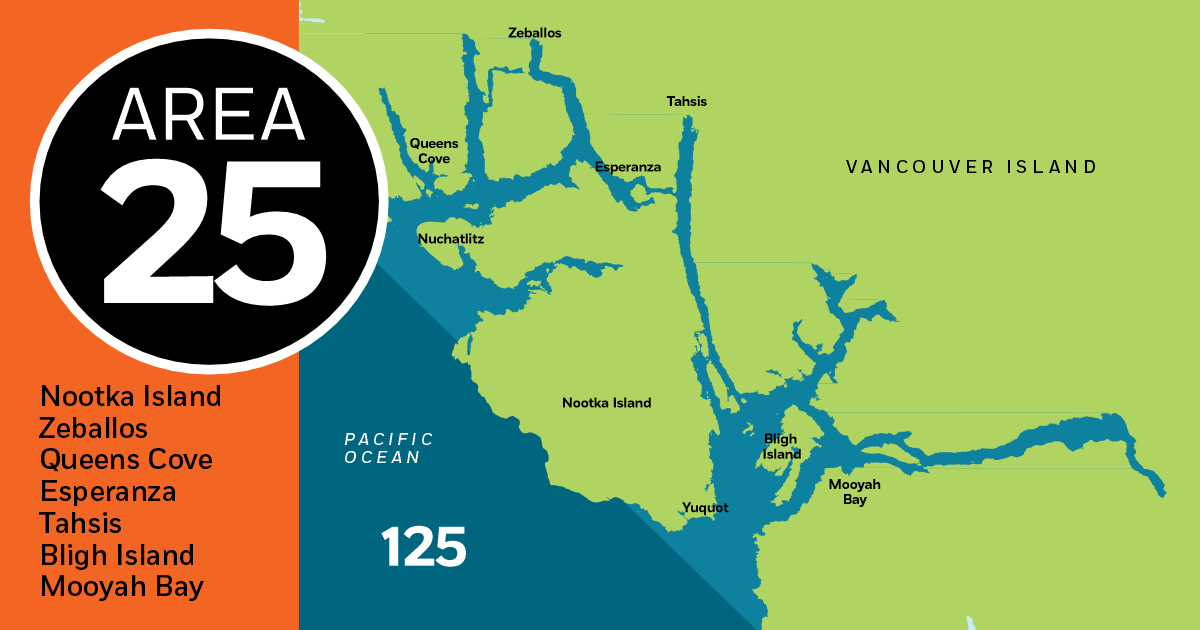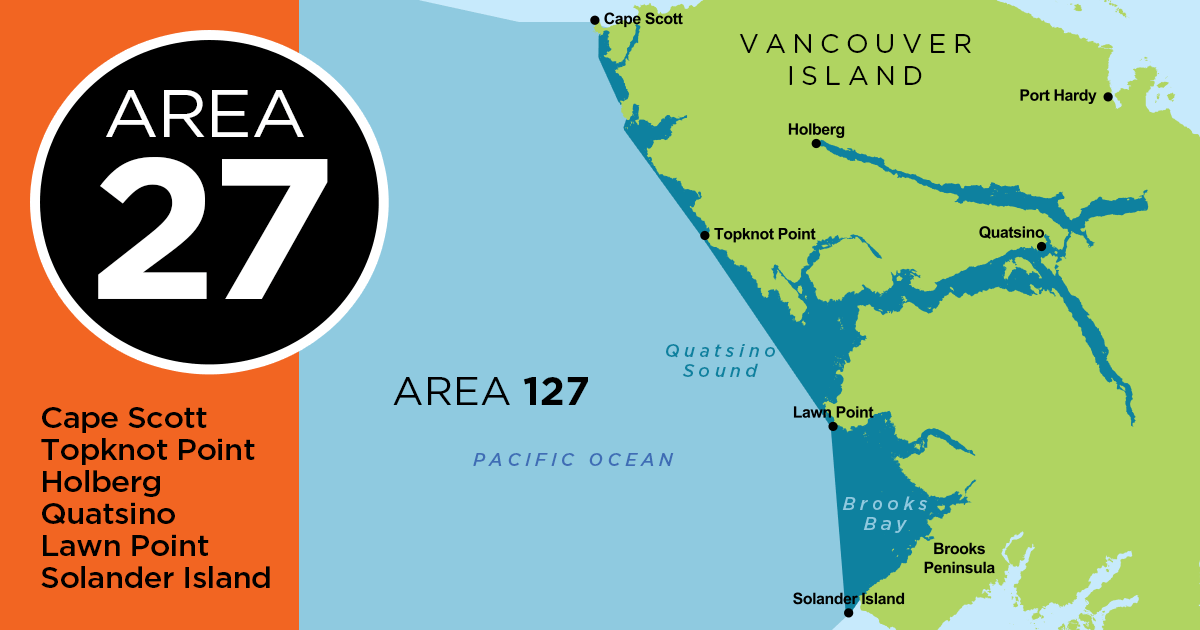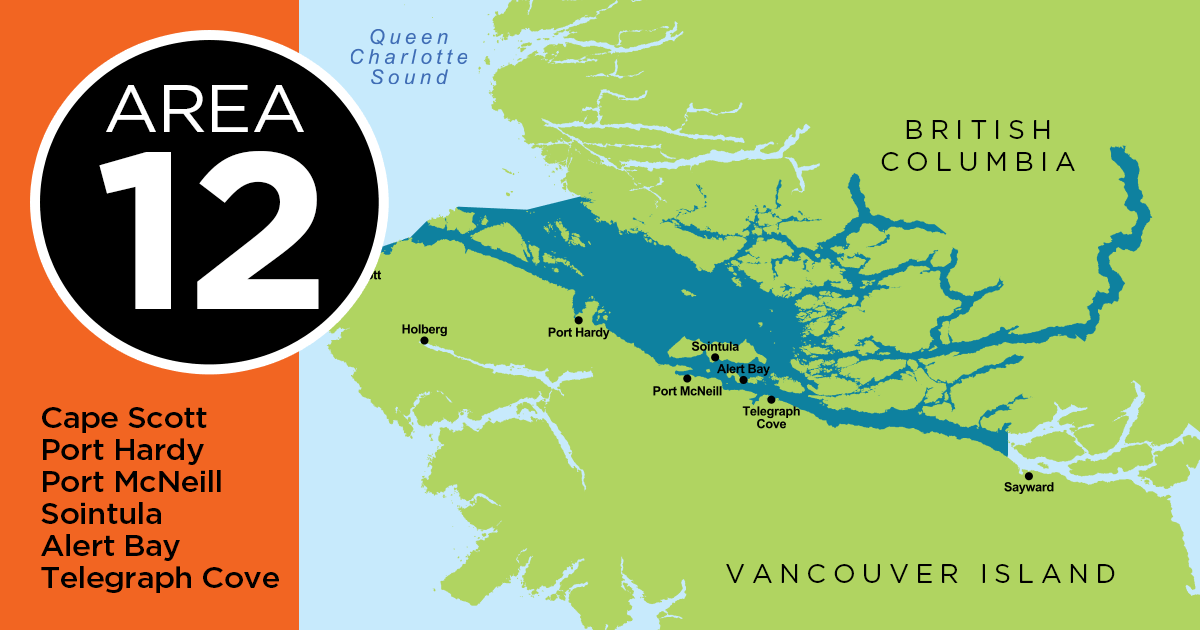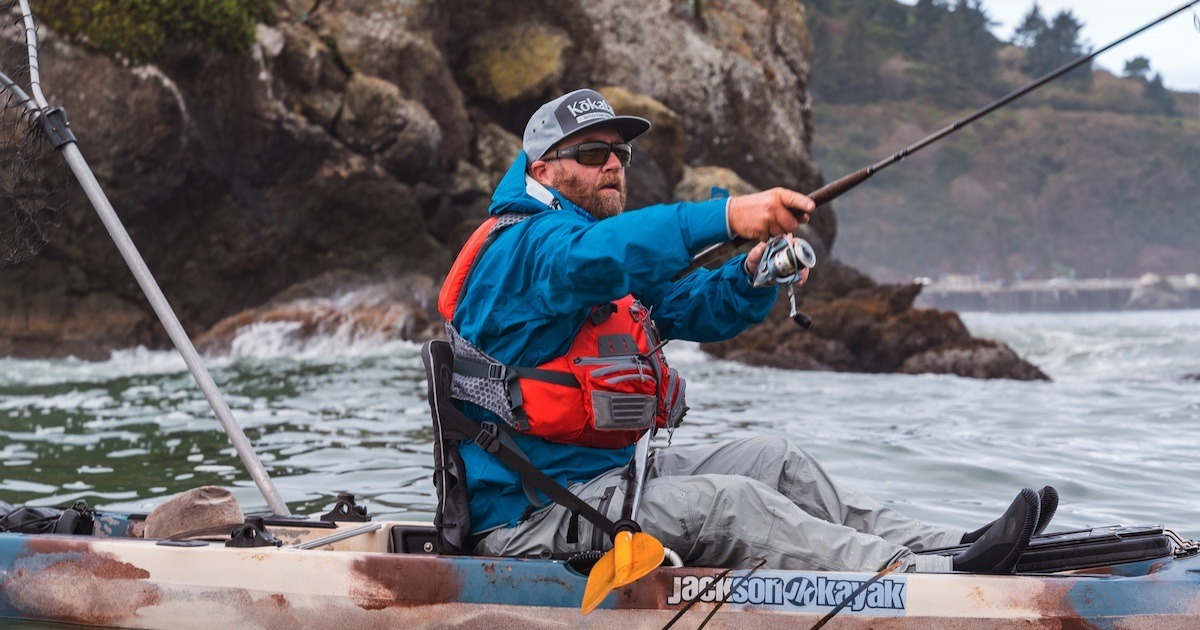
Kayak fishing in southwest BC is a year-round sport, and there are always fish to find. The key to a successful outing (and I am not talking catching), is staying warm enough to enjoy your time on the water. Today’s advanced textiles there present plenty of options, but not all products are created equal. I am often asked, “What is truly necessary?” So here goes.
Our cool Pacific northwest waters demand extra precaution be taken. The time from any immersion in water to becoming hypothermic is less than ten minutes. In general, to keep ourselves safe, the same layering principles for outdoor activities apply to kayak fishing. The biggest difference is the exposure to wind and water that requires greater consideration, particularly if you are extremely adventurous in trying some saltwater fishing during the winter months. So, let’s work our way from head to toe.
Pro Tip: The 100 /120 Rule: If the air and water temperature (in Fahrenheit) add up to less than 120, caution and dressing for conditions are advised. If total adds up to less than 100, make sure you are dressed appropriately for the conditions and not fishing alone.
Headwear For Kayak Fishing
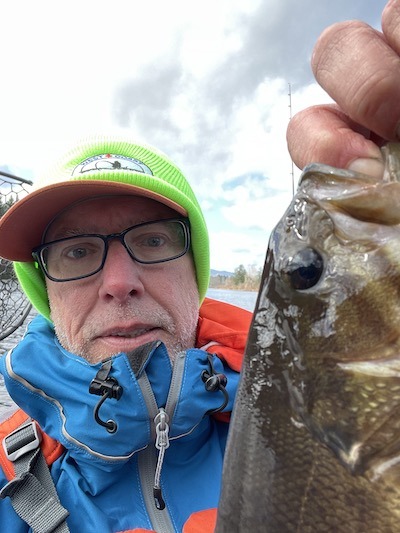
Author with the toque/ball cap configuration to keep heat in. The bright colour also helps to stay visible on fall day.
Heat loss occurs through exposed areas. If it’s nice out and you are not wearing any headwear and start to cool down, put it on. I’m a tried-and-true ball cap person. As they aren’t very warm, I like to top them off with a toque of some sort. Consider something with wool and preferably a lower profile. Today’s options include some with a longer taper on the back to cover your neck area as well.
Clothing For Kayak Fishing
Instead of breaking this into upper and lower body, I will cover them together and in reference to layers. As a starter, I still see many winter anglers out with jeans, sweats/hoodies or general “work wear.” They may have layers underneath or rain gear to put on top, but these types of clothing (generally of a cotton nature) absorb water and water vapour very easily, which contributes quickly to lowering the body temperature. Additionally, these clothing types do not breathe well and can contribute to rapid thermal cycling in the body with increased body movement—which is a given when you are landing all those fish!
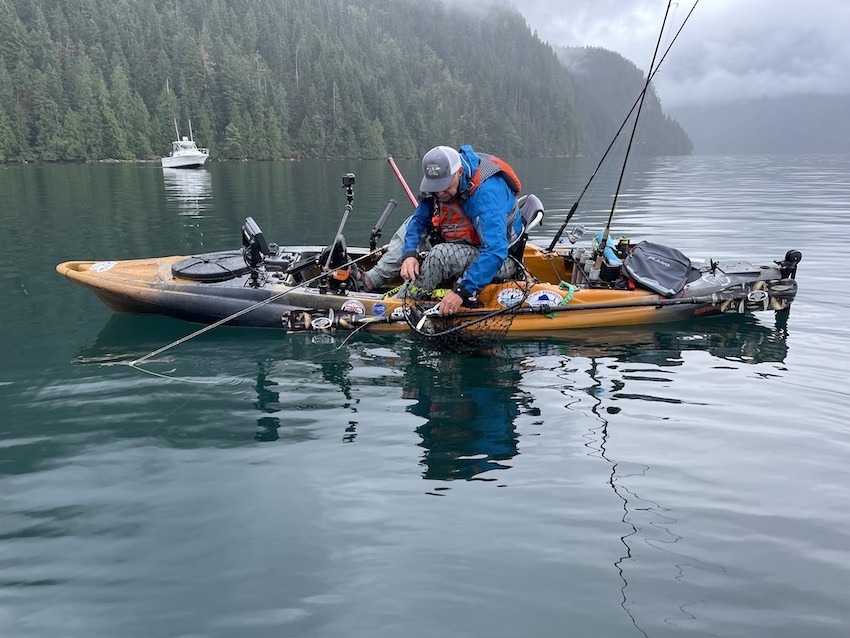
The author landing a fish
So now that we’ve discussed what’s not the best, let’s talk about alternatives. Starting with our base layer, any form of thermal, long sleeve, non-cotton, activewear should fit the bill. You can spend a little or a lot here, but my advice is to save the dollars for the outerwear.
Kayak Fishing Base Layer
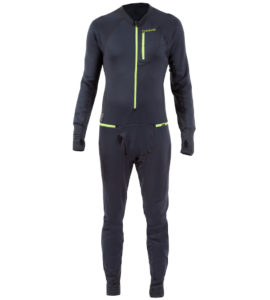
Kokatat Men’s Outercore Habanero Dry Suit Liner
In the crossover season of early fall when the weather looks favourable, I recommend some form of lightweight technical pants and top (often referred to as splash gear). There are numerous options, and I recommend looking for items that are “quick dry,” have good stretch properties, and offer good abrasion properties. I recommend looking at your paddlesports textile companies like Kokatat, Mustang, NRS, and Level Six to name some of the recognized quality brands.
As maintaining core temperature is key, I generally recommend an extra layer on the upper body. Being honest, I am something of a “hoodie” person, as I like the ability to throw the hood up to keep the neck area protected during windy and cooler conditions (plus, they look cool). But as noted above, this is not the best solution in the event of wet weather or an unfortunate immersion because they don’t just look cool, but they become cold. Better solutions for the extra layer are thermal Henleys or, my personal favourite, Stanfield’s wool henley. Other paddling gear also can serve this purpose well. Whatever you choose for the extra layer, make sure it fits properly under your outerwear, does not limit movement, and is relatively easy on and off.
Kayak Fishing Outerwear
So now onto the most important of all, outerwear. Over the years I have seen pretty much everything, including the flannel onesie! For me this is the most important investment in ensuring your safety and enjoyment for fishing twelve months of the year. The primary options are generally your standard fishing brands (Grundens, Simms, Viking, Helly Hansen) or your paddlesports textile providers discussed above. In my opinion, for kayak fishing the only option is paddle sport-specific products. Properly constructed paddlesports outerwear addresses the key wear areas, the areas requiring advanced movement, the ability to expel water vapour (kayak fishing is more active than traditional fishing). Some might argue that their fishing gear is Gore-Tex and serves the same purpose. The reality is all Gore-Tex products are not created equal! Another consideration in favour of our paddle sport manufacturers is the product warranty offered is generally superior, as they understand the wear the product will undergo.
Waders vs. Semi-dry Bib Pants
Pro Tip: Waders and semi-dry bib pants are not the same thing. Proper semi-dry paddling gear is gusseted around the waist (and ankles if integrated foot coverings are not available) which prevent water ingress, not to mention the better abrasion properties of most paddlesports. Below is a video that I liked that shows some interesting comparisons…
Fall Kayak Fishing: Semi-Dry Gear
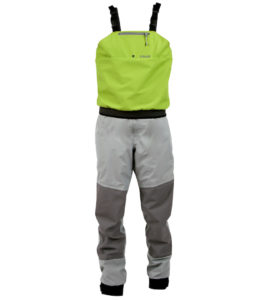
Kokatat Whirlpool Bib (HYDRUS 3.0)
So now we get a more technical and specific. My preference is to work from “splash gear” into semi-dry gear come the fall, and then to full dry suit for the winter months. Certainly having gear for all seasons can get expensive, so consider where and when you are most likely to fish. I tend to look at my purchases in terms of return on investment (ability to save my day/life) and cost per day on the water.
Pro Tip: I always hear, “It’s so expensive.” Here is my equation for valuing purchases for my fishing kayak. Value = item cost/fishing days per year X number of years product will last. The lower the cost per fishing day is the way to go and, in many cases, this means the investment in quality pays off!
A great example of this type of product line is Kokatat. As we progress to cooler fall days, I prefer semi-dry gear and generally use a two-piece system (either pants or bibs with a semi-dry top). This allows me the most flexibility in terms of layering and optimizing mobilization.
Winter Kayak Fishing: Dry Suit

SuperNova Angler Semi-Dry Suit (GORE-TEX Pro)
As we move to the winter months, I move to using a one-piece dry suit. Full protection, which I believe is a must if fishing alone, will protect you from the elements and maximize your day on the water. Key aspects of dry suits to consider are ease of access (for those bio breaks), quality of material (particularly the gussets), ease of putting on and taking off and secondary features that make operating easier. Dry suits are more than just an item to wear. They are like a spacesuit which means you need to learn how to correctly don, seal, and burp (let out the excess air). If you make this investment, take the time to get in the water and try it!! Don’t worry, you’ll be warm!
Kayak Fishing Footwear
Many of the dry suits and semi-dry suits have integrated footwear options. Other than my dry suit, I prefer to keep my footwear separate (just personal preference). Having gotten frostbitten toes during my prairie days, this is one of my biggest considerations. If wearing a dry suit with integrated footwear, I generally wear some type of partial wool thermal sock. Ski socks and Seal Skinz are other good alternatives.
For situations where independent footwear is required, neoprene booties like the Kokatat Nomad or the NRS Boundary Boot are the products of choice. As your feet cool during the day, a simple rewetting of your boots and rewarming the water inside the neoprene keeps them warm all day.

These Nomad booties are neoprene feet with easy-on waterproof gators that can be used all season for launching or full year warmth on the water.
Pro Tip: I highly discourage wearing rubber boots or hiking boots, due to their weight and capacity to hold water.
At the end of the day, being comfortable and warm on the water is important to having a great day. More important is preparing for the worst-case scenario and protecting your life. In my opinion, semi-dry and dry gear from reputable manufacturers is worth every penny, and with proper care will last a long time.
I hope this gives you some insight into extending your fishing season and being comfortable on the water. I have saved handwear for another issue, as it is too extensive to discuss here. Always pack a spare set of clothes in your vehicle, and if you are looking for a great resource on cold water paddling/ peddling, check out www.coldwatersafety.org.
Visit the Store
$34.99
$34.99
Featured Catch
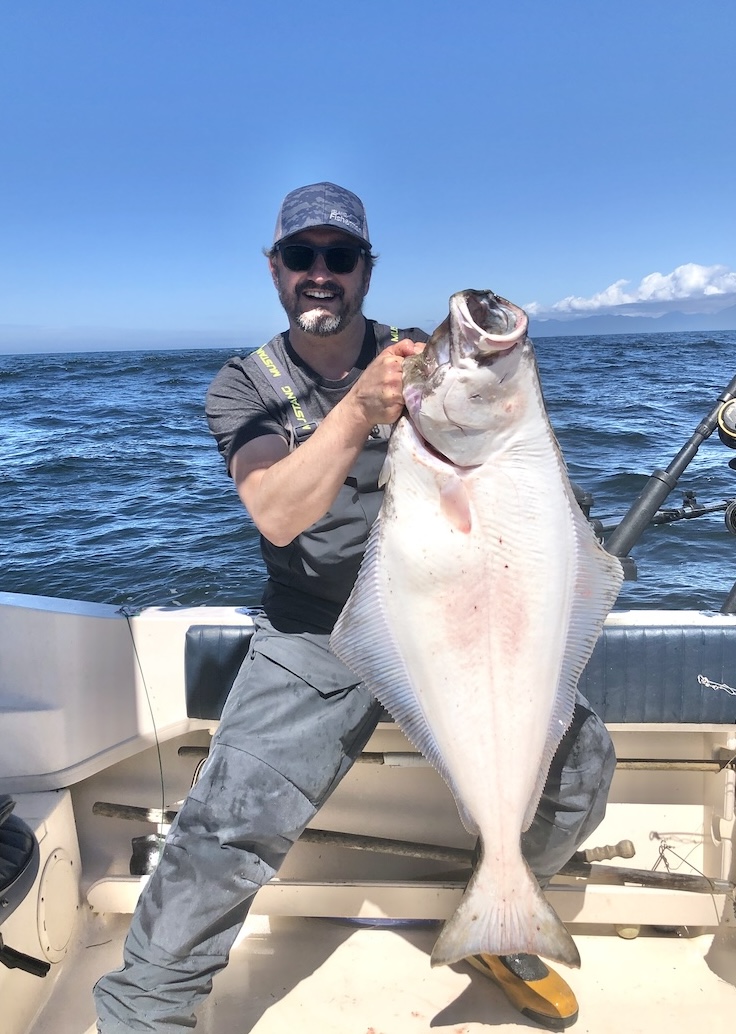
Joel Unickow halibut (Photo: Rob Frawley Lucky Strike Sportfishing Tofino)

